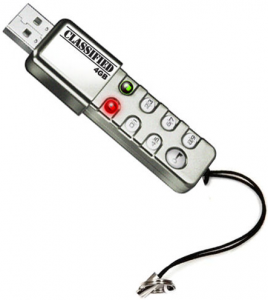It’s 2pm on Sunday: Do you know where your data is?
It seems the Los Alamos National Laboratory (LANL) is in the news again. Just when you’d think they addressed the vulnerabilities that Wen Ho Lee exploited back in 1999 (Lee has his own Wikipedia page now), they got slammed again in 2006 when local police found a thumb-drive with classified information on it at local residence involved in a local narcotics investigation. Well now the U.S. Government Accountability Office (GAO) just release an audit report of LANL that reported:
LANL has implemented measures to enhance its information security controls, but significant weaknesses remain in protecting the confidentiality, integrity, and availability of information stored on and transmitted over its classified computer network. The laboratory’s classified computer network had vulnerabilities in several critical areas, including (1) uniquely identifying and authenticating the identity of users, (2) authorizing user access, (3) encrypting classified information, (4) monitoring and auditing compliance with security policies, and (5) maintaining software configuration assurance.
While LANL got slammed for losing information on its “classified” network…what about all of the unclassified information that’s floating around out there? I feel it is just as important to make sure all of the sensitive but unclassified case information, organization proprietary information, or intelligence data that contains Personally Identifiable Information (PII) is protected as well–would you want to be the person explaining to their boss what data was just lost on that USB drive you left at the airport restaurant?
While I was at the International Association of Chiefs of Police Conference in Denver last month, I ran across a security item that really caught my eye–it was a standard, run of the mill 4GB USB thumb drive, but this one was unique–it had a built in PIN keypad, encrypted all data with AES encryption, and you didn’t have to plug it in to the computer first before unlocking it. I got to thinking…if every law enforcement officer and intelligence analyst who had a legal, bonafied reason for copying sensitive data onto portable media like CD-ROMs, SD cards, or unsecured thumb drives had one of these, they could sleep better at night knowing that the information on the thumb drive wouldn’t be compromised if it were lost or stolen, or than an unauthorized person who happend to get access to the drive couldn’t stick it in their computer and access the information it holds.
 The item is called the Classified Secure Flash Drive. It’s a 4GB thumb drive with a built in 5-key keypad for entering a 1-10 digit PIN. There is NO software required on the desktop/laptop to create or enter the PIN and all data on it is secured with 256 bit AES encryption. Those of you who know me know that I do not want to become another big IT vendor; however, I have decided to make these (and other innovative, niche technologies) available to agencies through NOWHERETOHIDE.ORG. For Federal agencies; the manufacturer has developed a FIPS 140-2 compliant version with a built in 10-key keypad; they are in the midst of the validation process now.
The item is called the Classified Secure Flash Drive. It’s a 4GB thumb drive with a built in 5-key keypad for entering a 1-10 digit PIN. There is NO software required on the desktop/laptop to create or enter the PIN and all data on it is secured with 256 bit AES encryption. Those of you who know me know that I do not want to become another big IT vendor; however, I have decided to make these (and other innovative, niche technologies) available to agencies through NOWHERETOHIDE.ORG. For Federal agencies; the manufacturer has developed a FIPS 140-2 compliant version with a built in 10-key keypad; they are in the midst of the validation process now.